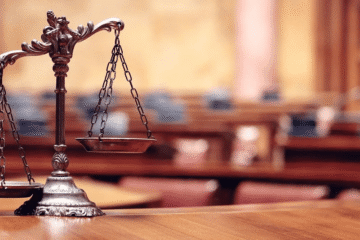
This Article is written by Esha Shekhar Gujar of KES Shri Jayantilal H. Patel Law College, an intern under Legal Vidhiya
ABSTRACT
The Advocate’s Act of 1961, once a pivotal reform in India’s legal system, now finds itself at odds with the evolving socio-economic realities of access to justice. This paper explores the widening gap between the law’s original intent and its present-day effectiveness. Through a critical lens, it examines the challenges of legal aid delivery, judicial delays, outdated legal education, and inadequate regulatory responses. It highlights how marginalized communities remain excluded due to limited awareness, infrastructural deficits, and digital divides. The research also assesses the stagnation within the Bar Council of India and the missed opportunities posed by globalization and foreign law firm entry. Recognizing that justice should not hinge on privilege, the paper proposes reforms focused on inclusive legal aid, digitization of complaint mechanisms, streamlined judicial appointments, and reimagined legal pedagogy. By embracing technology and global legal trends, while maintaining focus on grassroots empowerment, India can reshape the legal framework for deeper and more equitable access to justice. This reassessment of the Advocate’s Act offers not just a legal critique, but a call to renew the constitutional promise of justice for all.
KEYWORDS
Advocates Act, access to justice, legal reforms, Bar Council, legal aid, pro bono, legal profession, rural justice, legal education, lawyer regulation.
INTRODUCTION
The legal field of profession in India is not just a career path, it is a constitutional route to achieve justice in the country. Even as the legal field sees rising interest, with more students joining the profession each year, it remains one of the most misunderstood and heavily judged careers reflecting a deep-rooted public mis-trust. At the core of the legal profession in India is the Advocates Act of 1961 a landmark legislation that serves as the foundation for regulating the ethical standards, responsibilities, and privileges of lawyers across the country. While this act has set up a very strong institutional framework by establishing Bar Councils and systematizing the entitlement to practice law, its success in providing fair justice still remains debatable.
This paper argues that the Advocate Act, created in a significantly different socio legal context, needs to address to adapt modern challenges by rethinking its provisions. This reassessment is essential for realizing the constitutional guarantee of justice that reaches everyone, is quick and also considers the economic condition of an individual.
UNEQUAL JUSTICE AND SYSTEMATIC CHALLENGES: A CASE FOR REFORMING THE ADVOCATES ACT
- LEGAL AID IN INDIA: BRIDGING THE GAPS
Legal aid in India means providing free legal support to individuals who can’t afford the cost of hiring a lawyer or pursuing justice on their own. It’s meant to ensure justice is delivered to people regardless of their economic standing. In a functioning democracy, justice should not be treated as a privilege but given as a right. Justice should be accessible to all, specially the poor and marginalized, is a core principle embedded in Article 14 of the Constitution, which guarantees equality before the law.
- Shortage of Lawyers: Many legal aid lawyers are overwhelmed with work, are underpaid for their work, and lack resources to provide efficient assistance.
- Limited Community Engagement: Lawyers often don’t interact directly with communities which need legal aid, creating a disconnect between legal professionals and ground level realities.
- Educational Gaps: Many law schools from start did not gave importance to pro bono work or social responsibility, leading to a skill and empathy deficit.
- Digital Divide: The increasing dependency on online portals and helplines for legal aid excludes populations without internet access or digital literacy.
- Funding Issues: Legal aid institutions neither do have efficient funds nor up to mark staff, making large-scale implementation difficult.
Legal aid is usually directed towards those who need it most economically weak individuals, people from marginalized communities, women, children, and vulnerable groups. Eligibility requirements for which may vary from state to state. However, lack of awareness among the people is one of the major challenge, many people don’t even know they have a right to legal aid.
Currently, India’s legal aid landscape appears fragmented and inconsistent, often falling short of delivering dependable support to those who need it most. There’s minimal coordination and support, and the dream of equal access to justice seems to be slipping through the cracks. The difference between the ideals laid out and what’s actually being achieved is stark.
Illiteracy adds another layer of difficulty. It’s estimated that more than 70% of people living in rural India cannot read or write and even more have no idea what rights they legally hold. The absence of legal literacy among underprivileged communities exposes them to frequent exploitation, preventing them from asserting their rights or accessing the entitlements guaranteed by law.
- INDIA’S JUSTICE SYSTEM: STUCK IN SLOW MOTION
India’s judiciary is struggling under the immense pressure of a growing backlog of cases a consequence of sluggish procedural mechanisms, frequent adjournments, inadequate infrastructure, and a chronic shortage of judicial personnel. Even with expanded judicial posts, many judicial posts remain vacant, making it harder for courts to function efficiently.
Digital solutions like e-courts were introduced to ease pressure and modernize documentation, but progress has been inconsistent. A long-term, coordinated push is still needed to improve accessibility to justice, especially for those awaiting trial in overcrowded prisons. Fixing this faulty system requires more than patchwork measures. Real reform means streamlining legal processes, filling judicial vacancies, and adopting technology with purpose. Only then can India deliver timely justice and improve its global standing in human rights.
The Supreme Court has always dealt with a heavy load of cases but in recent years, that overlooked burden has steadily increased. According to findings by the Centre for Social and Economic Progress in New Delhi, the rise in caseloads has mirrored the growth of India’s population. As the country expands, so do the legal disputes and demands placed on the judicial system, making case management more complex than ever.[1]
The shortage of judges across Indian courts has taken a serious toll on the judicial system, especially when it comes to clearing pending cases. Between 2006 and 2017, the proportion of unfilled positions in India’s High Courts surged significantly from 16% to 37% signalling a deepening crisis in judicial capacity and institutional efficiency. Subordinate courts were similarly affected, with vacancies increasing from 19% to 25%, highlighting a deepening crisis in judicial staffing across the system. This growing gap has made it harder for courts to function smoothly, delaying justice for countless citizens and putting added strain on an already burdened system.
- BCI AND THE STAGNATION OF LEGAL EDUCATION
The Bar Council of India (BCI) holds major influence over legal education and the profession, yet its performance as a regulator is debatable. Efforts to reform its role have stalled, leaving a system burdened by outdated rules and limited innovation.
One major concern is that practising lawyers with hardly any teaching experience dominate BCI’s education policies. Most law colleges still rely on old lecture-based formats, offering minimal practical training or exposure beyond litigation. As a result, students graduate without the skills needed for research, policy work, or global legal roles.
The BCI’s Legal Education Committee, with barely any academic representation, seems ill-equipped to address these gaps. Without standardized qualification exams or modern reforms, many underprepared lawyers have entered the system, contributing to declining professional standards and institutional instability.
- DELAY IN DISCIPLINARY PROCEEDINGS
Disciplinary proceedings against advocates in India largely rely on manual processes and physical documentation, making them prone to loss or misplacement. Complaints are typically filed in hard copy, and communication such as notices and hearing details is handled through postal or courier services, resulting in inefficiencies. The lack of integrated digital case management systems continues to obstruct timely monitoring and resolution of cases, contributing significantly to persistent delays within the judicial process. This underscores the urgent need to transition toward modern, technology-driven management systems for greater transparency and efficiency.
- GLOBALIZATION AND ENTRY OF FOREIGN LAW FIRMS:
As legal services become more global, the way lawyers work is changing too. Today’s legal professionals need more than local expertise they must understand how laws function across borders, navigate global procedures, and stay updated on international standards. This shift calls for a broader, more informed approach to legal practice that reflects the interconnected world we live in.
Globalization has opened new markets and opportunities in every field, but it’s also contributed to legal complexity. As business expand across borders, they must navigate diversely and has to constantly evolving with new regulations. Lawyers now focus more on managing cross border risks, trade laws, foreign investment and dispute resolution
PROPOSED REFORMS
- REDESIGNING LEGAL AID FOR INCLUSIVE JUSTICE:
To ensure justice is not a privilege but a right, India must reimagine its legal aid system. The first step is educating the public about their rights this can begin with law school clinics working alongside local courts to guide those in need. Campaigns in regional languages, supported by NGOs, can raise awareness even in remote areas.
Law students should be exposed to social realities through mandatory legal aid internships, while lawyers who take on pro bono work deserve incentives like recognition or career credit. Community paralegals can be trained to serve as first responders for legal advice in underserved areas.
The current system struggles with poor feedback mechanisms and lacks infrastructure for real-time case monitoring even though recent initiatives like the Legal Aid Defence Counsel System offer hope.
Looking forward, technology will play an important role. Technological interventions such as mobile applications, online legal clinics, and electronic filing platforms have the potential to overcome geographical constraints and address disparities caused by limited legal literacy. Specialized legal aid in areas like labour and family law, alongside ADR mechanisms like mediation, can ease pressure on courts to a significant level.
To truly reach those in need, legal aid awareness must go local broadcast in native languages via radio and social media. Partnering with NGOs and trusted community leaders can help inform marginalized groups like women, SC/STs, and migrant workers about their rights and resources.
- PENDING CASES
By the end of July, the Supreme Court of India recorded 83,312 pending cases marking a modest decrease of 968 cases compared to the start of the month. This marks a small but significant shift in otherwise rising trend. After months of steady increases, even a slight dip brings a feeling of progress and relief. This is the first time since February 2024 that the backlog has actually shrunk. The spike in pendency during June, which crossed 84,000 cases, wasn’t unexpected since the Court took its annual summer break from May 20 to July 7. Now, with the benches back in action, there’s hope that the trend continues.[2]
- RETHINKING ADVOCACY FOR GLOBAL ACCESS
With global supply chains growing, compliance with international labour and environment standards is increasingly important with legal aspect. Legal process outsourcing (LPO) has emerged as a cost-effective solution, reshaping how legal services are delivered.
Recent changes to the Bar council of India (BCI) Rules in 2023 allow foreign law firm to operate in India, setting the stage for stronger service standards and global collaboration This transformation is opening new avenues for Indian lawyers to engage with global legal markets and demonstrate their professional capabilities on an international platform. This rise in cross-border transactions has made international commercial arbitration a go-to solution for resolving disputes valued for its neutrality, efficiency, and recognition across jurisdictions.
- DIGITIZING JUSTICE
Digital Portals for complaint filing and case tracking enable complainants to submit grievances online with ease and convenience, from anywhere. Automated workflows ensure timely reminders, scheduling of hearings, and document submission deadlines, helping enforced fixed timelines. Centralized databases preserve complete electronic records that are secure, searchable and easy to audit. The implementation of e-courts in India marks a major advancement in the digitalization of the judicial system, aiming to enhance accessibility, efficiency, and transparency. These electronic courts leverage information and communication technology to streamline judicial processes and offer digital services to litigants, lawyers and other stakeholders, reducing the dependency on physical presence and paperwork in court proceedings[3] The objective was to improve efficiency in management of cases and enhance productivity as well as enable citizens to access justice from anywhere, reducing the need for physical presence in courts.
CONCLUSION
The Advocates Act, passed in 1961, marked a significant milestone in India’s legal landscape which brought uniformity to the profession as well as standardization. It established a comprehensive regulatory structure to oversee and guide the practice of law throughout the country. However, even after so many years the environment in which it functions has been substantially changed in all aspects. Even after significant increase in law colleges and lawyers, achieving accessible justice for all still feels like a dream.
This study emphasizes that the problem is not just infrastructural but also structural having deep roots connection with the legal framework that governs the profession. The current version of the act in equally prioritizes professional freedom while failing to reasonably establish public accountability, regulate fees or enhance service delivery in underrepresented areas
To create a more inclusive legal framework, the Advocates Act requires significant revisions centred on public interest. Essential modifications should involve obligatory pro bono service, assistance for rural legal practice, enhanced ethical standards, and increased transparency. The purpose of the Act should go beyond protecting the interests of advocates it must also ensure that every person, regardless of background, has fair and timely access to justice.
REFERENCES
- Article 39A and Free Legal Aid: Is Access to Justice a Reality in India available on https://doonlawmentor.com/article-39a-and-free-legal-aid-is-access-to-justice-a-reality-in-india/?utm_source=chatgpt.com
- The Advocates Act, 1961: A dive into the Act by Himanshu Kumar available on https://www.vkeel.com/legal-blog/the-advocates-act-1961-a-dive-into-the-act
- Legal Aid in India: Current scenario and future challenges by Akarshita Singh available on https://articles.manupatra.com/article-details/Legal-Aid-in-India-current-scenario-and-future-challenges
- Challenges and Reforms: Bar Council of India’s Efforts in the legal sector available on https://blog.medugare.com/index.php/2023/11/20/challenges-and-reforms-bar-council-of-indias-efforts-in-the-legal-sector/
[1] Access to justice: Indian Supreme Court’s backlog is ‘serious issue’ by Rebecca Root, IBA Southeast Asia Correspondent available on https://www.ibanet.org/Access-to%20justice-Indian-Supreme-Courts-backlog-is-serious-issue
[2] Supreme Court reduces case backlog by over 900 in July 2024 by Advay Vora available on https://www.scobserver.in/journal/supreme-court-reduces-case-backlog-by-over-900-in-july-2024/
[3] E-COURTS IN INDIA: INTRODUCTION, BENEFITS AND CHALLENGE
https://www.jyotijudiciary.com/e-courts-in-india-introduction-benefits-and-challenges/
Disclaimer: The materials provided herein are intended solely for informational purposes. Accessing or using the site or the materials does not establish an attorney-client relationship. The information presented on this site is not to be construed as legal or professional advice, and it should not be relied upon for such purposes or used as a substitute for advice from a licensed attorney in your state. Additionally, the viewpoint presented by the author is personal.




0 Comments